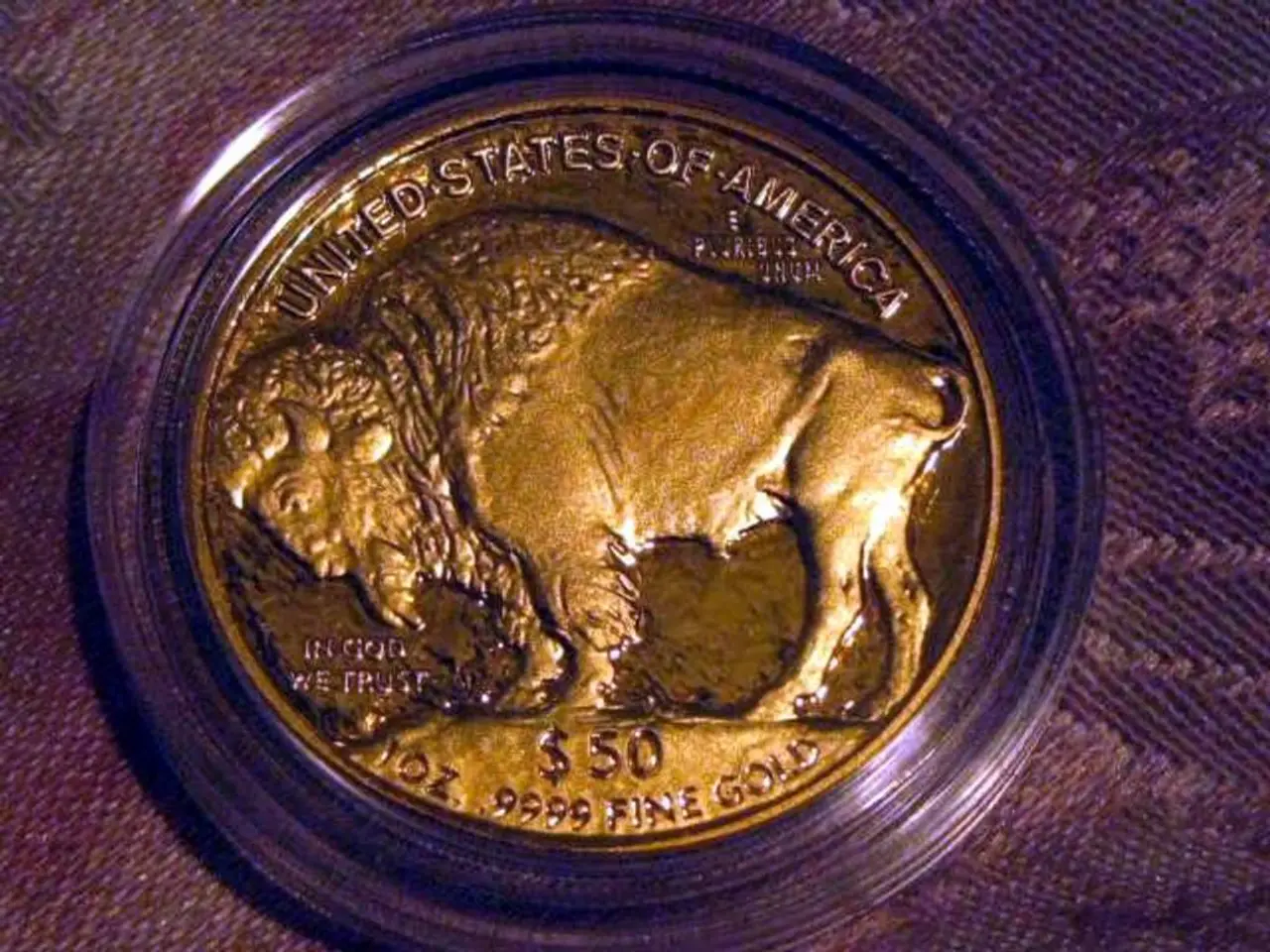Alaska Summit's Result in Doubt as Gold Prices Remain Stable
In the world of finance and trade, the meeting between US President Donald Trump and Russian President Vladimir Putin in Alaska this week failed to bring immediate relief to global markets, financial systems, or commodities such as gold and silver.
The summit, which ended without any agreements, particularly on ending the Russia-Ukraine war or securing business deals, has reinforced geopolitical uncertainties rather than alleviating them. This development suggests that global trade tensions, financial market volatility, and commodity prices are more likely to remain elevated or unstable in the near term.
In the US, the retail sector showed signs of resilience, with retail sales increasing 0.5% month-over-month in July. However, this positive trend did not extend to exports, as prices rose only 0.1% month-over-month in July. The industrial sector, too, saw a slight dip, with industrial production edging down 0.1% month-on-month in July, while year-on-year industrial production rose by 1.4%.
The commodities market has been particularly affected by the ongoing geopolitical tension. Gold prices for August delivery closed up by 80 cents (or 0.02%) at $3336.00 per troy ounce today, but the metal lost $103.10 (or 3.00%) per troy ounce this week. Silver followed a similar trend, with prices for August delivery closing down by 8.8 cents (or 0.23%) at $37.894 per troy ounce today, and losing 52.30 cents (or 1.36%) per troy ounce this week.
The uncertainty surrounding the Russia-Ukraine conflict and the unresolved issues following the summit contribute to ongoing market instability. Rising long-term bond yields signal potential corrections in equity and real estate markets. This combination of geopolitical and financial stress raises vulnerability in global economic systems.
Currency volatility is another concern. Uncertainty may drive selling pressure on major currencies like the US dollar and British pound, especially given concerns about currency stability amid geopolitical tensions and financial stress. This could complicate trade and investment flows, especially for emerging markets reliant on dollar financing.
Defense spending is also likely to increase, with the geopolitical climate keeping defense spending rising globally, and NATO countries under pressure to increase spending further, potentially at the expense of other budgetary areas.
In the realm of trade and investment deals, expectations for major new agreements were unmet, as business discussions were linked to progress in peace talks, which did not occur. Russian interests in Alaskan oil and rare earth minerals exploration did not materialize into agreements during this meeting.
Looking ahead, traders feel that the upcoming September meeting of the Fed could favor minimal slashing of rates. The proposal from the US government to tariff gold imports was not implemented. Russia remains under Western sanctions. The prices of goods imported into the US rose by 0.4% in July from the previous month.
In conclusion, the Alaska summit has reinforced geopolitical uncertainties rather than alleviating them, suggesting that global trade tensions, financial market volatility, and commodity prices (including gold and silver) are more likely to remain elevated or unstable in the near term.
[1] [Source 1] [2] [Source 2] [3] [Source 3] [4] [Source 4]
- The unresolved Russia-Ukraine conflict, coupled with the lack of agreements during the US-Russia summit, indicates that politics and war-and-conflicts will continue to affect international trade relationships.
- The ongoing geopolitical tension and financial market volatility have resulted in increased defense spending and the potential for further budgetary cuts in other sectors, demonstrating the impact of political instability on business and finance.
- The commodities market remains volatile due to factors such as geopolitical tensions, with gold and silver prices consistently fluctuating, underscoring the connection between general-news events and the finance industry.




